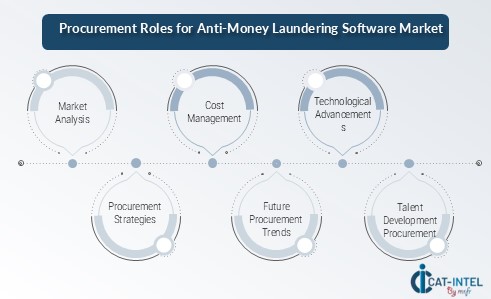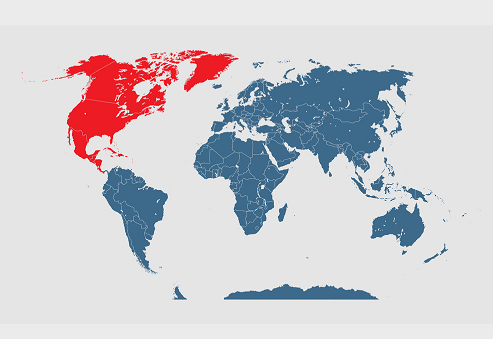Summary Overview
Anti-Money Laundering Software Market Overview
The global Anti-Money Laundering (AML) software market is undergoing significant growth, propelled by increasing regulatory requirements, the rising incidence of financial crimes, and the demand for advanced compliance solutions. As financial institutions and businesses prioritize the integrity of their operations, investments in AML software are surging. Our report provides an extensive analysis of emerging procurement trends, spotlighting cost-saving opportunities through integrated compliance platforms and the shift towards automated monitoring systems. Additionally, we address the future challenges faced by organizations and highlight the pivotal role of AI-driven analytics in enhancing fraud detection capabilities.
Additionally, we address future procurement challenges and emphasize the importance of digital procurement tools in accurately forecasting market needs to keep clients ahead in this dynamic landscape. Strategic sourcing and procurement management play a crucial role in streamlining the procurement process for software development. As competition intensifies, companies are leveraging market intelligence solutions and procure analytics to optimize their supply chain management systems. The outlook for the AML software market is promising, with several key trends and projections signalling robust growth through 2032:
Market Size: The global AML software market is projected to reach approximately USD 4.6 billion by 2032, reflecting a compound annual growth rate (CAGR) of around 15% from 2024 to 2032.
-
Sector Contributions: Growth is primarily driven by:
Financial Services: Increasing compliance requirements in banking and insurance sectors are escalating demand for AML solutions.
Government Initiatives: Enhanced regulations and enforcement actions are pushing organizations to invest in robust AML software.
Technological Transformation and Innovations: Advances in artificial intelligence (AI), machine learning (ML), and data analytics are significantly enhancing the effectiveness of anti-money laundering (AML) software. These technologies enable more accurate detection of suspicious activities, real-time transaction monitoring, and risk-based assessments. Additionally, innovations in blockchain technology and automated compliance tools are improving transparency and reducing the time required for regulatory reporting.
Funding Initiatives: Significant investments from both private and public sectors in cybersecurity and compliance technologies are propelling market growth.
Regional Insights: North America holds a substantial market share; however, the Asia-Pacific region is expected to exhibit the highest growth rate, driven by stringent regulations and increasing financial crimes.
Key Trends and Sustainability Outlook
Automated Compliance Solutions: Organizations are increasingly adopting automated systems for real-time monitoring and reporting to streamline compliance processes.
Integration with Financial Systems: The integration of AML software with existing financial platforms is enhancing efficiency and data accuracy.
Real-time Risk Assessment: Continuous monitoring and real-time risk assessment capabilities are becoming essential to detect suspicious activities promptly.
Growth Drivers:
Regulatory Pressure: Stricter regulations globally are mandating the implementation of AML solutions across industries.
Rise in Financial Crimes: The increasing sophistication of money laundering schemes is driving the need for advanced detection systems.
Technological Advancements: Innovations in AI and data analytics are improving the efficacy of AML software in identifying potential threats.
Market Competition: Organizations are investing in AML capabilities to maintain a competitive edge and uphold their reputations.
Public Awareness: Growing public scrutiny of financial institutions is influencing investment in compliance technologies.
Overview of Market Intelligence Services for the Anti-Money Laundering Software Market Recent analysis indicate that the AML software market is grappling with rising costs associated with compliance and the need for continuous software upgrades. To address these financial challenges, market reports provide comprehensive cost assessments and procurement strategies, enabling organizations to manage expenses while ensuring compliance. By leveraging insights from these reports, financial institutions can adopt effective strategies to mitigate costs and optimize their procurement processes.
Procurement Intelligence for Anti-Money Laundering Software market: Category Management and Strategic Sourcing
To stay ahead in the anti-money laundering (AML) software market, companies are optimizing procurement strategies, leveraging spend analysis solutions for vendor spend analysis, and enhancing supply chain efficiency through supply market intelligence. Procurement category management and strategic sourcing are becoming essential in achieving cost-effective procurement of AML software solutions and ensuring the timely availability of advanced tools to combat financial crimes. By integrating these approaches, organizations can effectively assess software capabilities, negotiate favorable terms with vendors, and maintain compliance with evolving regulatory requirements while ensuring optimal performance and reliability of their AML systems.
Pricing Outlook for Anti-Money Laundering Software Market: spend analysis
The gaph shows a general upward trend in pricing for Anti money laundering software, likely due to rising costs, increased complexity, and growing demand. However, there may be fluctuations influenced by economic conditions, technological advancements, and competitive dynamics.
The AML software market is witnessing rising prices due to:
Regulatory Compliance: Increased costs driven by stricter regulations.
Cybersecurity Threats: Higher demand for advanced detection features.
Market Demand: Growing need across banking and fintech sectors.
Future Trends:
Sustained Growth: Continued year-on-year growth expected.
Competitive Pricing: Increased competition may stabilize costs for standard solutions.
Cost Management: Organizations can mitigate expenses through multi-year contracts and exploring open-source options.
Cost Breakdown for the Anti-Money Laundering Software Market: Total cost of ownership and cost saving opportunities
-
Software Licensing & Subscriptions (50%)
Description: This category encompasses costs associated with acquiring licenses for AML software, including annual subscription fees for on-premises or cloud-based solutions. Organizations also incur costs for updates and upgrades to maintain compliance with evolving regulations.
Trends: The demand for AML software is projected to rise significantly, as financial institutions are increasingly prioritizing compliance. Subscription costs are expected to increase due to heightened competition among vendors and the introduction of advanced features, such as AI-driven analytics and automation
-
Labor (XX)
Description: XX
Trends: XX
-
Consulting & Implementation Services (XX%)
Description: XX
Trends: XX
-
Infrastructure & Overheads (XX%)
Description: XX
Trends: XX
Cost saving opportunity: Negotiation Lever and Purchasing Negotiation Strategies
Optimizing procurement in the Anti-Money Laundering (AML) software market can significantly reduce costs and improve operational efficiency for financial institutions. Key strategies include integrating advanced technologies like AI and machine learning to automate processes and enhance data analysis, which allows for efficient real-time transaction monitoring and minimizes compliance costs. Robust data management systems improve the quality of data used for risk assessments and compliance reporting, further streamlining operations.

Supply and Demand Overview of the Anti-Money Laundering Software Market: Demand-Supply Dynamics and Buyer Intelligence for Effective Supplier Relationship Management (SRM)"
The Anti-Money Laundering (AML) software market is expanding due to heightened regulatory scrutiny, increased financial crimes, and advancements in technology. Demand is particularly strong in the banking, fintech, and insurance sectors, driven by the need for compliance and risk management solutions.
Demand Factors:
Regulatory Compliance: Growing regulatory requirements worldwide compel institutions to invest in robust AML solutions to mitigate risks and avoid penalties.
Rising Financial Crime: An increase in money laundering and fraud activities drives the demand for effective detection and prevention software.
Technological Advancements: Innovations in AI and machine learning enhance the capabilities of AML software, making it more attractive for organizations seeking efficient solutions.
Global Operations: As businesses expand internationally, there is a heightened need for AML compliance across diverse jurisdictions, increasing the market demand for adaptable software solutions.
Supply Factors:
Diverse Product Offerings: The market features a range of AML software solutions, from basic compliance tools to comprehensive platforms that integrate multiple functions.
Partnerships and Collaborations: Strategic alliances between software providers and financial institutions improve the development and deployment of AML solutions.
Competitive Landscape: A growing number of vendors in the AML software market leads to increased innovation, better pricing models, and enhanced product features.
User-Centric Solutions: The focus on user-friendly interfaces and customizable solutions caters to the varied needs of financial institutions, improving market supply.
Regional Demand-Supply Outlook: Anti-Money Laundering Software market
The image shows growing demand for Anti money laundering software in both North America and Asia, with potential price increases and increased competition.
North America: The Leading Market for AML Software North America, particularly the U.S. and Canada, dominates the AML software market, characterized by:
Strong Regulatory Framework: Stringent laws and regulations like the Bank Secrecy Act (BSA) and the USA PATRIOT Act require robust compliance measures, driving demand for AML software.
Major Financial Hubs: Cities like New York and Toronto host a concentration of financial institutions that prioritize advanced AML solutions to combat financial crime.
Significant Investment: High investment levels in technology and compliance infrastructure support the growth of AML software adoption among banks and financial services.
Innovative Technology Adoption: North America leads in the implementation of cutting-edge technologies, such as AI and big data analytics, in AML solutions, enhancing detection and prevention capabilities.
International Influence: North American firms set trends in compliance standards and technology, influencing the global AML software market and driving strategic investments from international stakeholders.
North America remains a key hub Anti-Money laundering software innovation and growth

Supplier Landscape: Supplier Negotiations and Strategies
The supplier penetration in the Anti-Money Laundering (AML) software market is significant, with a growing number of global and regional players offering advanced solutions for financial institutions to detect and prevent money laundering activities. These suppliers play a pivotal role in shaping market dynamics, influencing pricing, technological innovation, and regulatory compliance. The market is highly competitive, with suppliers ranging from established financial software giants to specialized fintech companies focusing on AI-driven AML solutions.
Currently, the supplier landscape is characterized by strong competition among top-tier software providers, which dominate the market share. However, emerging fintech startups are also gaining traction by offering tailored, innovative AML technologies, such as real-time transaction monitoring and predictive analytics, catering to niche market needs and enhancing the efficiency of AML processes.
Some of the Raw material suppliers in the Anti-Money Laundering Software Market include:
SAS Institute Inc.
ACI Worldwide, Inc.
NICE Actimize (NICE Systems)
FICO (Fair Isaac Corporation)
Oracle Corporation
Thomson Reuters (Refinitiv)
Actico GmbH
EastNets
ComplyAdvantage
InfrasoftTech
Key Development: procurement category significant development
Development |
Description |
Emerging Capabilities |
Increased Regulatory Scrutiny |
Governments are tightening AML regulations globally, prompting organizations to enhance compliance. |
Advanced compliance analytics and automated reporting. |
Adoption of Artificial Intelligence |
AI and machine learning are increasingly used for transaction monitoring and risk assessment. |
Improved anomaly detection and predictive modelling. |
Integration of Big Data |
Financial institutions are leveraging big data analytics to enhance AML strategies. |
Real-time data processing and analytics capabilities. |
Cloud-Based Solutions |
Growing trend towards cloud-based AML solutions for scalability and flexibility. |
Enhanced collaboration and accessibility for users. |
Focus on Customer Experience |
Increased emphasis on user-friendly interfaces and streamlined compliance processes. |
Enhanced user interfaces and customizable dashboards. |
Collaboration Across Borders |
Financial institutions are forming partnerships to share intelligence and improve compliance. |
Collaborative platforms for sharing AML data and insights. |
Procurement Attribute/Metric |
Details |
Market Sizing |
The AML software market is expected to grow from USD 3.5 billion in 2024 to USD 4.6 billion by 2032, at a CAGR of 15% during this period. |
Adoption Rate |
Approximately 50% of financial institutions globally are adopting advanced AML software with integrated AI, machine learning, and cloud-based solutions. |
Top Strategies for 2024 |
Focus on regulatory compliance enhancements, fraud detection automation, cost optimization, and multi-region reporting capabilities. |
Process Automation |
40% of AML activities in banks and financial services have been automated, significantly improving efficiency and fraud detection rates. |
Key Challenges |
Regulatory complexities, rising cyber threats, maintaining data privacy, and high costs of integrating advanced technologies. |
Key Suppliers |
Leading providers include Oracle, NICE Actimize, Fiserv, SAS Institute, and ACI Worldwide, offering end-to-end AML compliance solutions. |
Key Regions Covered |
Strong adoption in North America, Europe, and Asia-Pacific, with growth hotspots in the U.S., U.K., China, and India. |
Market Drivers and Trends |
Growth driven by stricter regulations, increasing financial fraud risks, and demand for AI-powered AML tools. Trends include blockchain integration and enhanced customer due diligence tools. |








